Multiple Bumps on the Back of Your Tongue? Most Likely Reasons
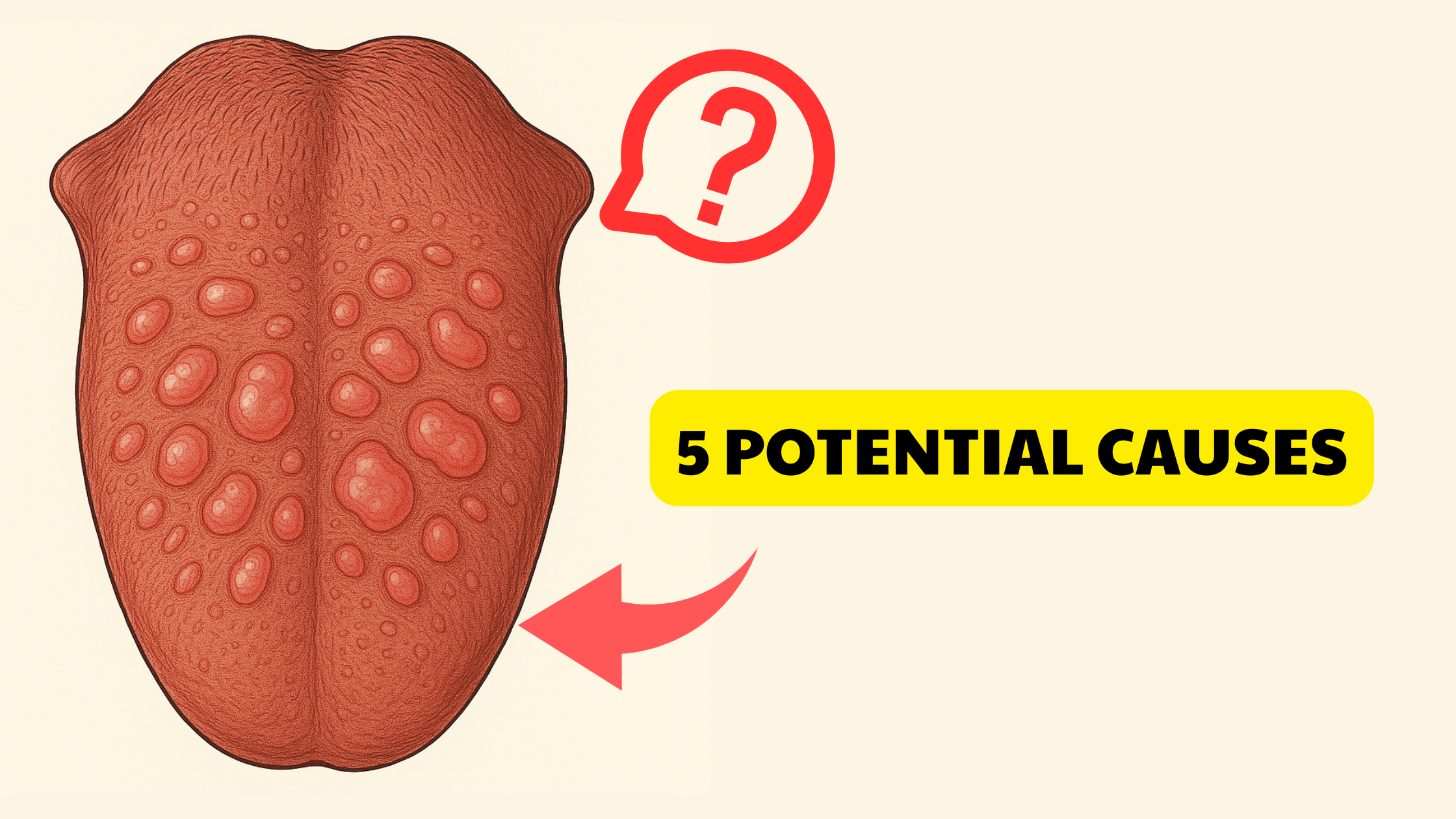 The tongue is a complex part of your body, made up of eight different muscles. Unlike what you might think, it’s not supposed to look smooth. A smooth, shiny tongue can actually be a sign of inflammation or an underlying health issue.
The tongue is a complex part of your body, made up of eight different muscles. Unlike what you might think, it’s not supposed to look smooth. A smooth, shiny tongue can actually be a sign of inflammation or an underlying health issue.
A healthy tongue should have a rough surface. This texture comes from the numerous tiny bumps called papillae that cover it. These papillae help you taste, feel, and chew your food.
These are found all over your tongue, including at the back. So if you’ve noticed multiple bumps on the back of your tongue and you’re unsure what they are, don’t worry. We’ll break it down for you, explaining what’s normal, what might not be, and when they must be checked out.
In this article:
1. When Are Bumps on the Back of Your Tongue Normal?
2. When Can Multiple Bumps on the Back of Your Tongue Mean Something’s Wrong?
- Swollen Papillae Due to Inflammation
- Bumps Caused by Viral Infections (Common in Children)
- Human Papillomavirus (HPV)
- Hairy Tongue
- Swollen Lingual Tonsils
3. Can Multiple Bumps on the Tongue Be a Sign of Mouth Cancer?
4. When to Seek Help
When Are Bumps on the Back of Your Tongue Normal?
A bumpy texture on your tongue is completely natural. It’s just your papillae that come in four types spread across the surface of your tongue.At the very back of your tongue, you’ll find the largest ones called circumvallate papillae. These are the easiest to see.
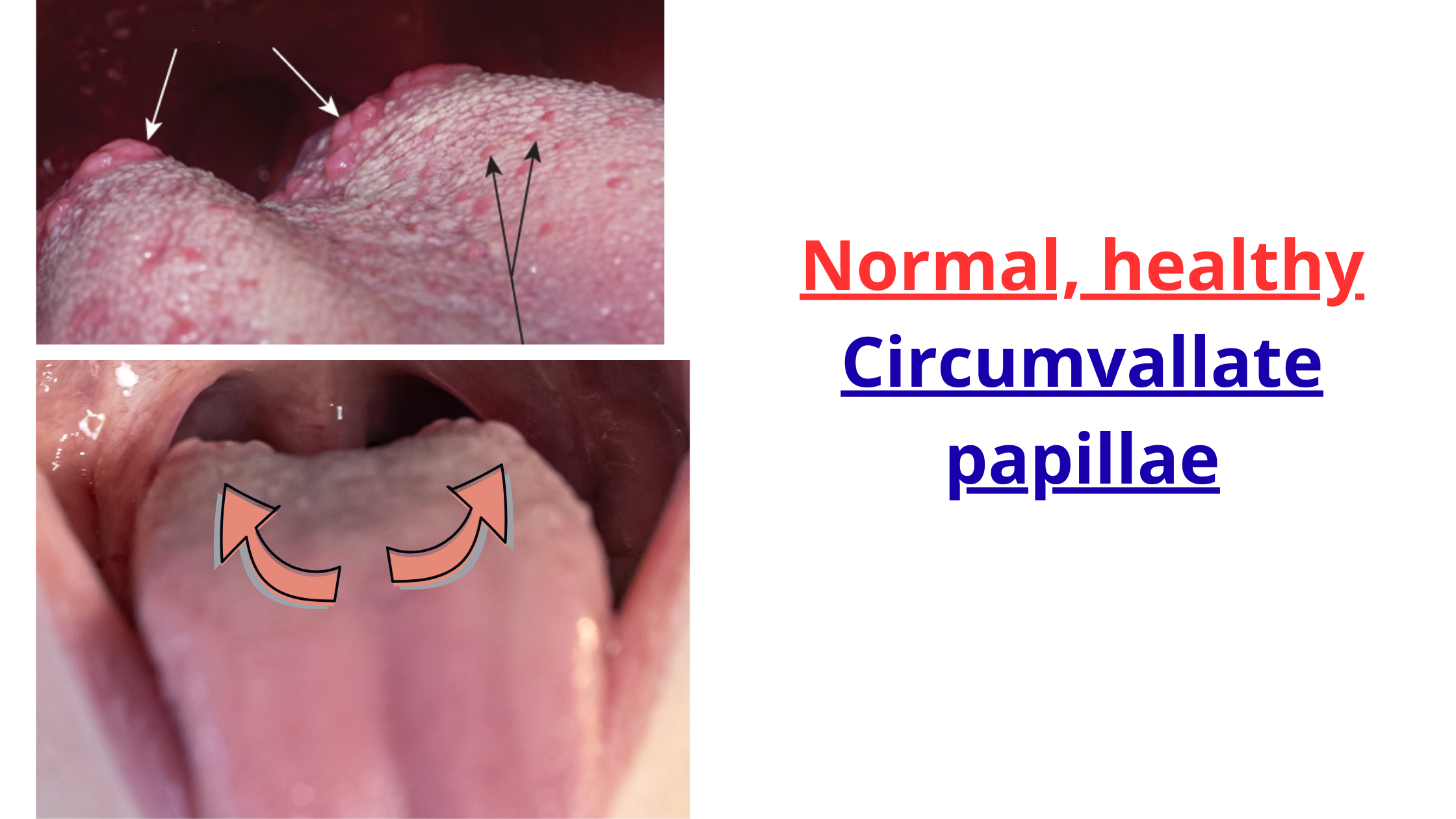
You can see them by opening your mouth wide and sticking out your tongue. They typically look like this:
- About 8 to 12 small, reddish bumps.
- Round in shape.
- Arranged in a “V” shape right at the back of your tongue (as shown below).
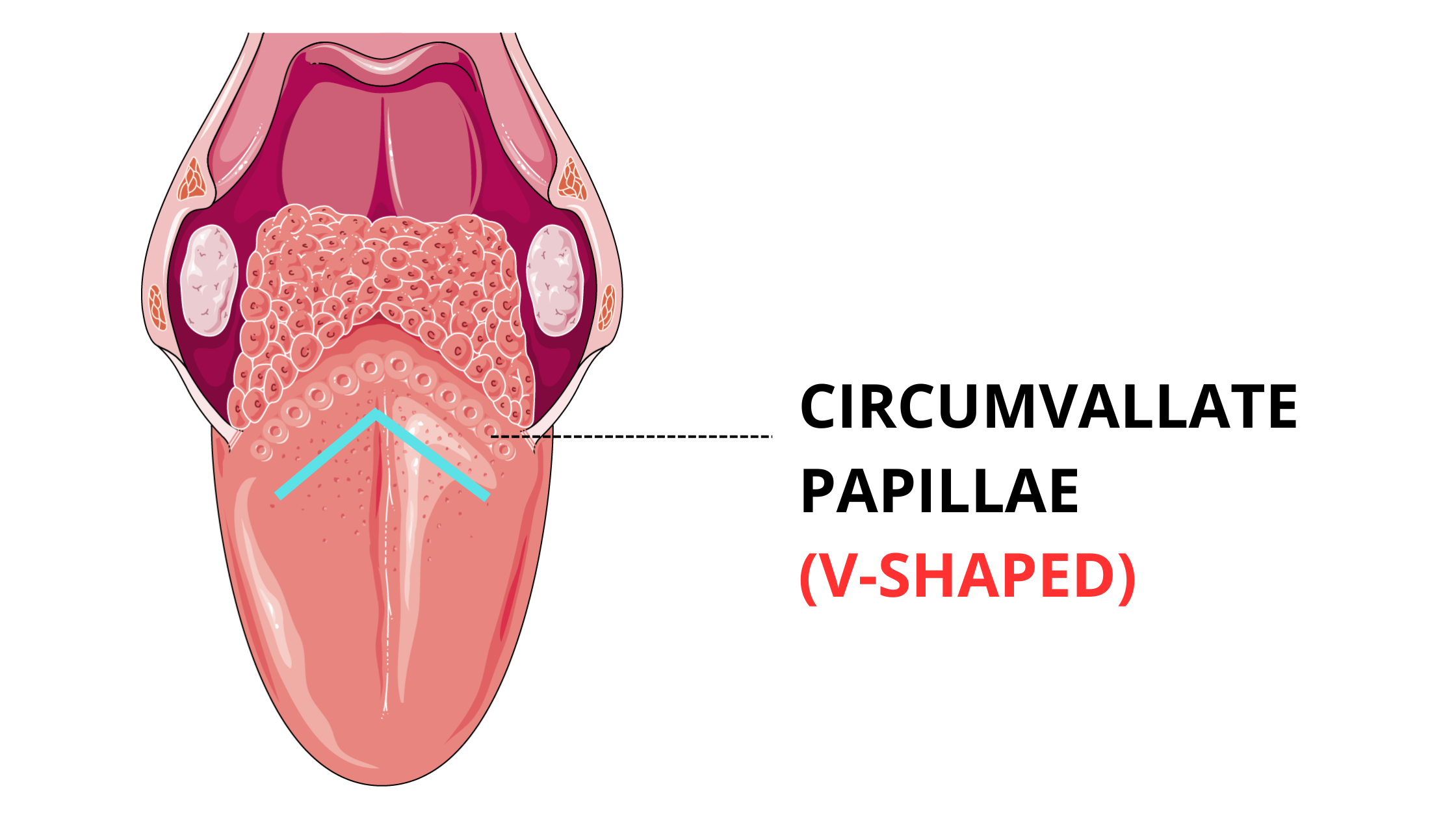
There are also three other types of papillae located on the front two-thirds of your tongue. These are called filiform, fungiform, and foliate papillae.
- Filiform: These are tiny, cone-shaped, hair-like projections that give your tongue its rough texture. They don’t contain taste buds but are the most numerous, covering most of the front part of your tongue.
- Fungiform: These are mushroom-shaped, with a round top and narrow base. They also cover the front two-thirds of your tongue and do contain taste buds. If you look closely, you’ll see them as small red dots.
- Foliate: These look like vertical folds along the right and left sides of your tongue. They appear as rectangular, column-like ridges and also contain taste buds.
When Can Multiple Bumps on the Back of Your Tongue Mean Something’s Wrong?
The bumps you see on the back of your tongue may just be your normal papillae. However, if they appear larger than usual, they may be swollen, which can be due to many factors.In rare cases, multiple bumps can be caused by benign tumors caused by the human papillomavirus (HPV).
Finding a single lump instead of many can mean different things. Most often, it’s a harmless growth called fibroepithelial hyperplasia, which happens due to constant irritation. It usually appears on the sides of the tongue, as these areas are more likely to rub against the teeth (see image below). Very rarely, a single bump could be a sign of oral cancer.
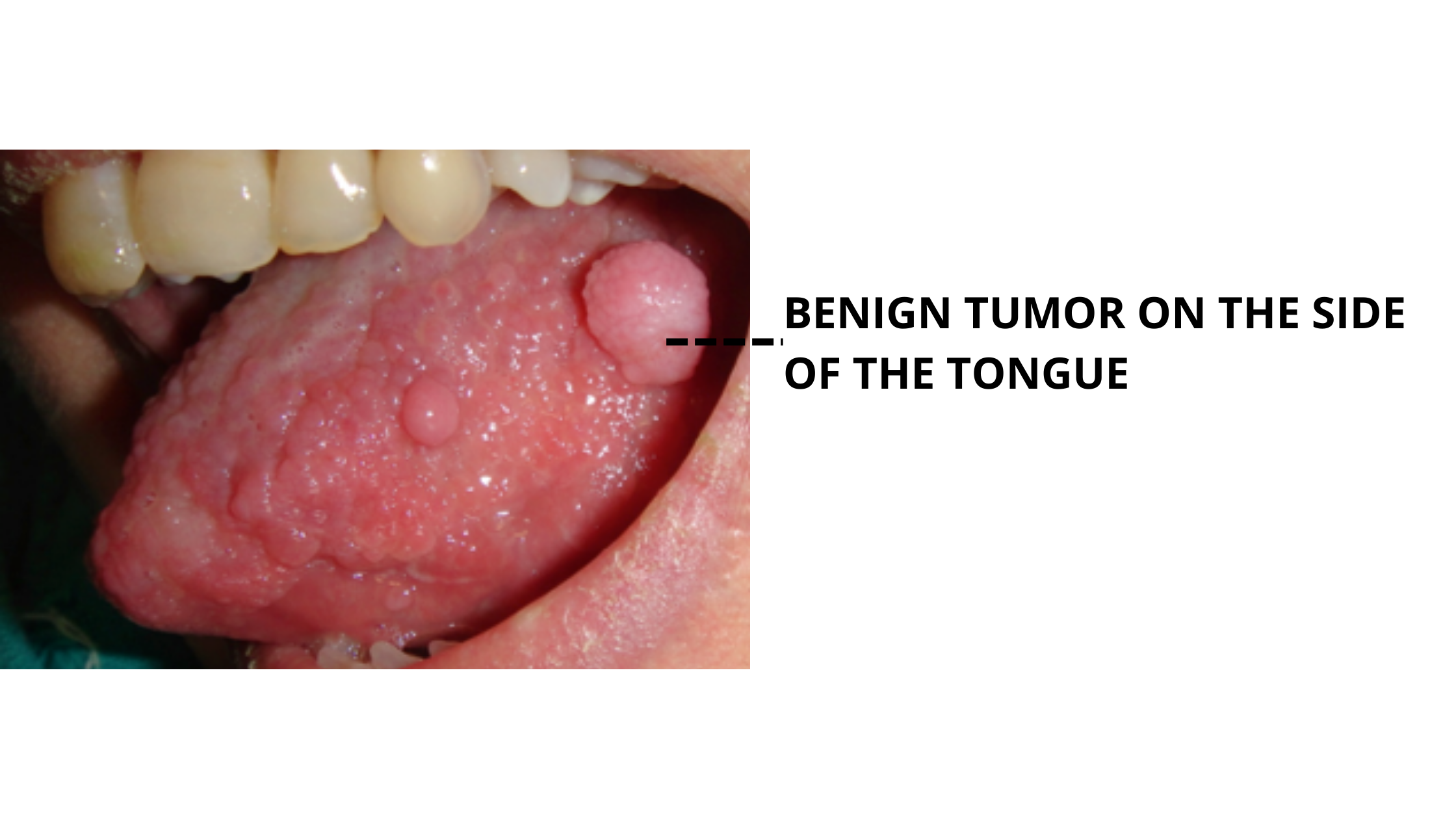
Here are some 5 possible reasons you might notice multiple bumps on the back of your tongue:
1. Swollen Papillae Due to Inflammation
While the papillae at the back of your tongue are naturally large and easy to see, the other papillae usually aren’t that noticeable — unless they become swollen.
When these papillae swell, they can look like small, bubble-like red or white spots. This is often due to inflammation from a harmless condition called lingual papillitis. It's so common, and some studies suggest that it affects more than half of all people at some point.
In adults, it’s commonly known as “lie bumps” or transient lingual papillitis because it comes and goes quickly. It usually clears up on its own within a few days. Here’s what you might notice:
- Small, painful red or white bumps all over your tongue, not just at the back
- Discomfort when eating or drinking
- A burning or tingling sensation
Anyone can get it, but women tend to be more prone, possibly due to hormonal changes, stress, or fatigue. Other factors that can trigger it include:
- Local irritation or injury, like brushing too hard or burning your tongue on hot food or drinks.
- Sensitivity or allergies to certain foods (if the cause is an allergy, you might also notice diffuse redness).
- Eating lots of spicy, acidic, or sugary foods.
- Using harsh oral care products, such as an alcohol-based mouthwash.
2. Bumps Caused by Viral Infections (Common in Children)
Many viral infections can cause symptoms inside the mouth, but the most common culprits are oral herpes (caused by herpes simplex virus type 1) and hand, foot, and mouth disease (caused by the Coxsackievirus).
When these viruses infect the body for the first time — usually before age 5— they can inflame the tongue’s papillae and cause them to swell. This is known as eruptive or familial lingual papillitis because it can be highly contagious and can spread to other family members.
In adults, it often looks similar to lie bumps, but here, the swelling is due to a viral infection.
In children, because their immune system is still developing, the discomfort and swelling can last longer, sometimes up to 15 days. Other common signs include:
- Mouth sores or ulcers
- Fever
- Burning sensation in the mouth
- Swollen lymph nodes
Once the initial infection clears up, the virus doesn’t leave the body completely. It stays dormant and can reactivate later in life.
When this happens in adults, the symptoms are usually milder because the immune system is already more familiar with the virus. So there are no severe symptoms like fever or swollen lymph nodes.
3. Human Papillomavirus (HPV)
Human papillomavirus (HPV) can spread through direct contact. When it reaches the mouth, it can settle on the mucosa (the soft pink lining inside your mouth) and cause single or multiple wart-like bumps called papillomas.
A papilloma is usually a small, slow-growing benign (non-cancerous) tumor. It often has a rough, grooved, white surface that looks a bit like a cauliflower.
These bumps can appear anywhere in the mouth, including on the tongue. They usually feel firm to the touch and may be attached by a broad base or a tiny stem.
Most oral papillomas and HPV infections in the mouth are harmless and tend to go away on their own without causing any serious problems. However, certain types of HPV — especially HPV-16 and HPV-18 — are known to increase the risk of oral cancer.
The risk becomes even higher if other factors like smoking or heavy alcohol use are involved.
4. Hairy Tongue
Hairy tongue is a common condition — it can affect up to 13% of people.
It happens when the dead skin cells on your tongue aren’t shed properly and keep building up. This stops the surface skin from renewing itself and causes the filiform papillae to grow longer than normal. As they lengthen, they create hair-like projections on your tongue’s surface.
Over time, food particles and bacteria can get trapped in this layer, leading to a thick white coating. This coating can also change color — turning yellow, brown, or even black — when it absorbs pigments from food and drinks.
The good news is that a hairy tongue isn’t as bad as it looks. It’s harmless and easy to get rid of by regular tongue cleaning and gentle scraping.
5. Swollen Lingual Tonsils
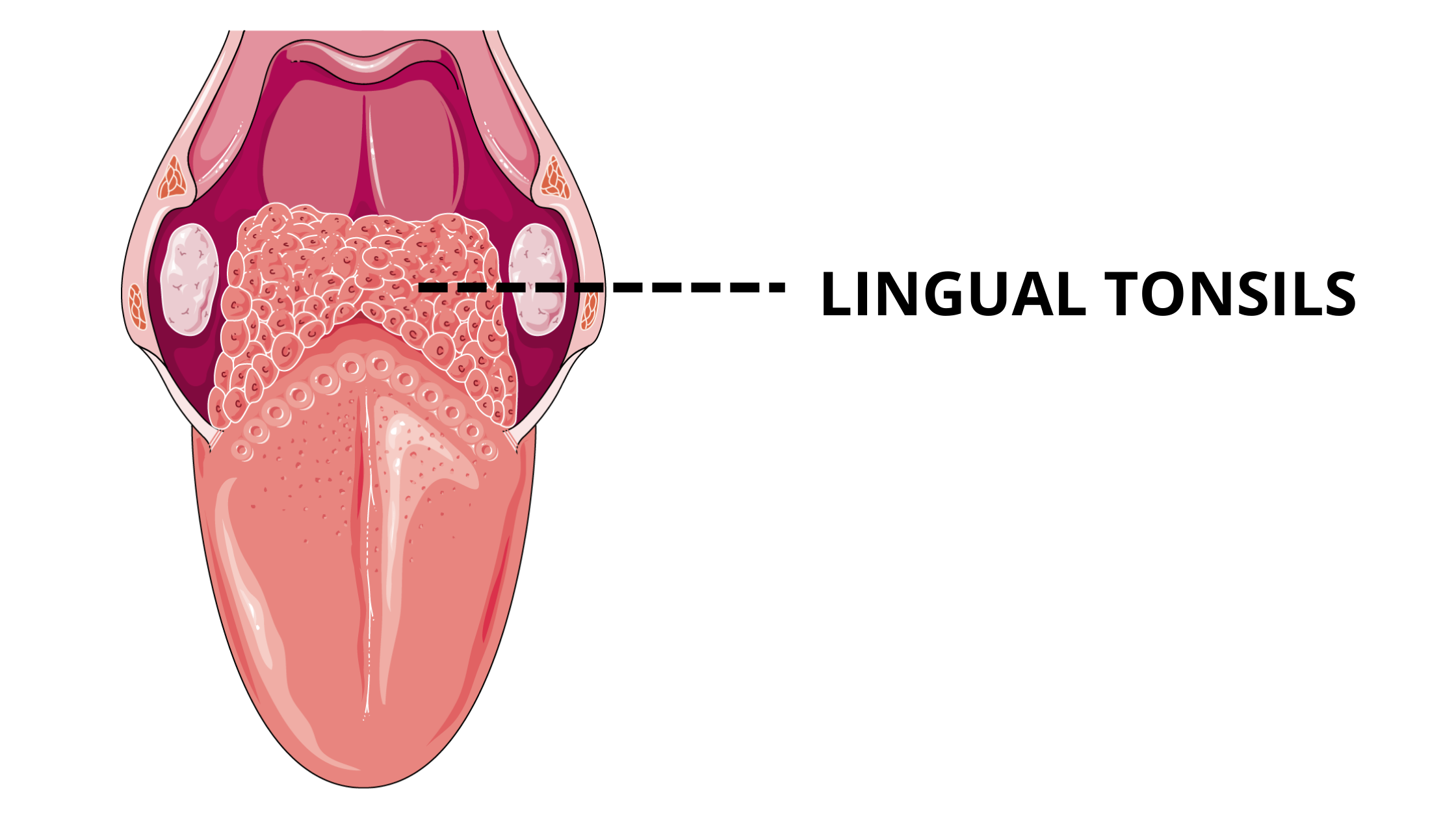
Your lingual tonsils are small nodules of lymphatic tissue located at the very back of your tongue, just behind the circumvallate papillae.
These tonsils give the back third of your tongue a rough, cobblestone-like texture. They’re especially important during childhood as they help detect and fight off viruses and bacteria.
As you get older and your immune system strengthens, they become less significant.
Normally, you can’t see your lingual tonsils just by opening your mouth because they sit at the base of your tongue, near the throat.
However, if they become swollen (which is rare in adults), they may sometimes become visible and cause various symptoms, such as:
- Difficulty eating
- Changes in your voice
- A feeling of something stuck in your throat
- Snoring or breathing problems during sleep (like sleep apnea)
- In severe cases, very enlarged tonsils can make breathing difficult
Several factors can cause your lingual tonsils to swell, including:
- Chronic infections (viral or bacterial)
- Surgery in the throat area
- Smoking
- Gastroesophageal reflux disease (GERD)
- Certain medications
- Allergies
Can Multiple Bumps on the Tongue Be a Sign of Mouth Cancer?
Multiple bumps on the tongue are not a typical sign of oral cancer. They’re more often caused by harmless, temporary inflammation (like papillitis) or viral infections.Oral cancer is more likely to appear as a persistent single lump, an ulcer, or a mix of both, most commonly on the sides of the tongue.
Unlike benign bumps, cancerous growths don’t heal but get worse over time. They are more aggressive, grow quickly, and damage the nearby tissues.
That said, other signs in your mouth don’t necessarily mean cancer, but should be checked by a healthcare professional as soon as possible:
- Red patches without any clear cause
- White patches that can be flat or raised
- Unexplained bleeding
- Sores or ulcers that don’t heal after two weeks
- Any unusual or persistent symptoms in your mouth
When to Seek Help
Bumps on your tongue caused by inflammation usually don’t need any treatment. The discomfort often fades on its own within a few days. The swollen papillae might take a little longer to go back to normal, but they will eventually return to their usual size and shape.If your discomfort lasts more than a week or becomes severe, don’t hesitate to see your dentist. They may suggest treatments like:
- Rinsing your mouth several times a day with salt water and baking soda
- Eating cool, soft foods until the symptoms improve
- In more severe cases, using corticosteroid creams or sprays to reduce inflammation
On your part, it’s important to avoid anything that triggers flare-ups. This might include limiting irritation or injury, staying away from foods you’re allergic or sensitive to, avoiding spicy or acidic foods, and managing stress.
If you’re worried about the bumps on the back of your tongue, remember they might simply be your normal, healthy taste buds. But if you notice any sudden or unusual changes in your mouth, it’s always a good idea to check in with your dentist or doctor.
- Transient lingual papillitis - DermNet NZ
- Non-painful severe variant form of eruptive lingual papillitis: A case report and literature review - PMC
- Eruptive lingual papillitis with household transmission: a prospective clinical study - British Journal of Dermatology
- HPV and Cancer - National Cancer Institute (NCI)
- Human tongue anatomy of papillae and taste buds - ResearchGate
- Hairy Tongue - American Academy of Oral Medicine (AAOM)
- An unusual case of lingual tonsillar hypertrophy - PMC
- Structures of the Head and Neck | Frank J. Weaker